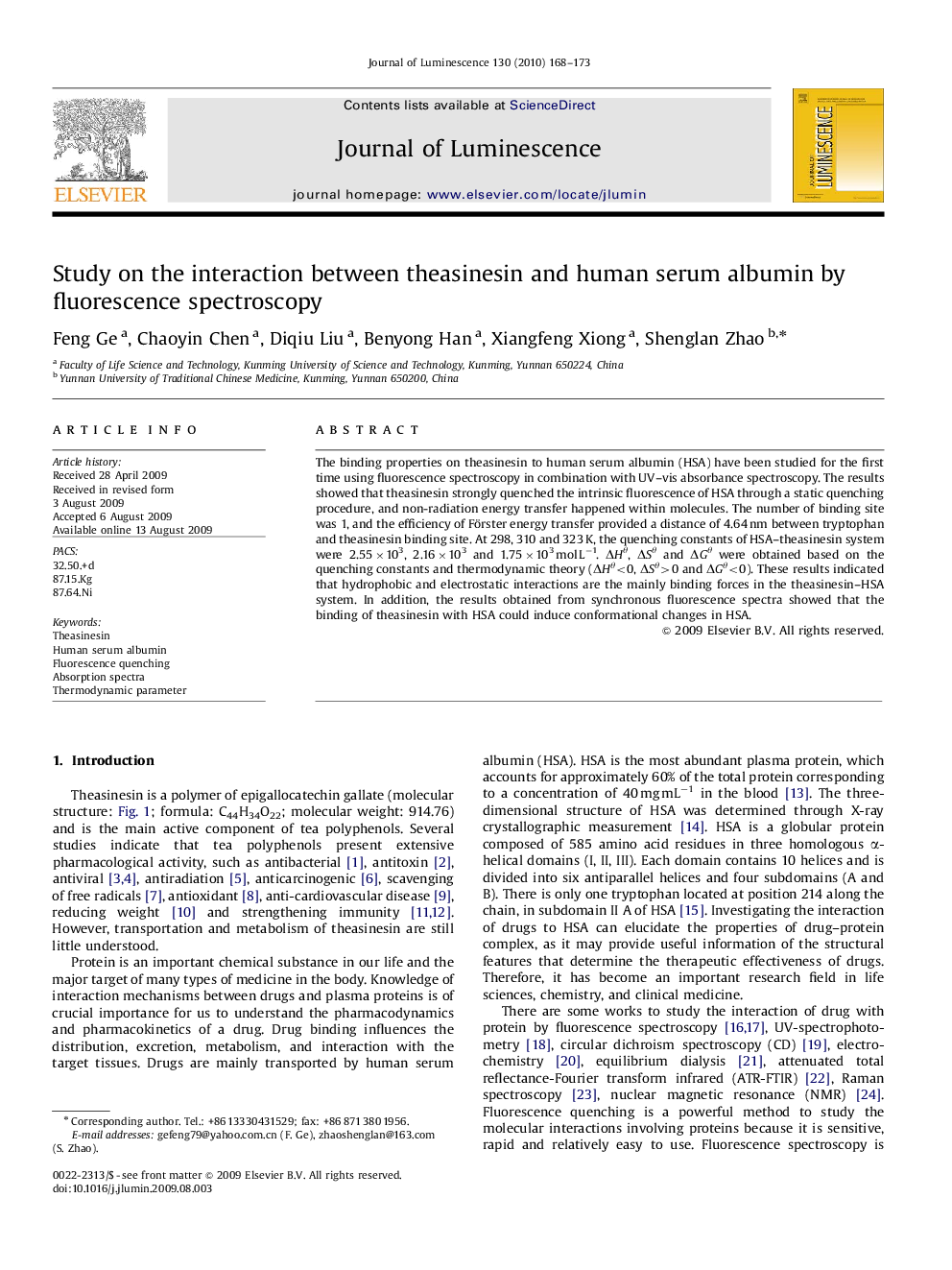| Article ID | Journal | Published Year | Pages | File Type |
|---|---|---|---|---|
| 5402886 | Journal of Luminescence | 2010 | 6 Pages |
Abstract
The binding properties on theasinesin to human serum albumin (HSA) have been studied for the first time using fluorescence spectroscopy in combination with UV-vis absorbance spectroscopy. The results showed that theasinesin strongly quenched the intrinsic fluorescence of HSA through a static quenching procedure, and non-radiation energy transfer happened within molecules. The number of binding site was 1, and the efficiency of Förster energy transfer provided a distance of 4.64 nm between tryptophan and theasinesin binding site. At 298, 310 and 323 K, the quenching constants of HSA-theasinesin system were 2.55Ã103, 2.16Ã103 and 1.75Ã103 mol Lâ1. ÎHθ, ÎSθ and ÎGθ were obtained based on the quenching constants and thermodynamic theory (ÎHθ<0, ÎSθ>0 and ÎGθ<0). These results indicated that hydrophobic and electrostatic interactions are the mainly binding forces in the theasinesin-HSA system. In addition, the results obtained from synchronous fluorescence spectra showed that the binding of theasinesin with HSA could induce conformational changes in HSA.
Keywords
Related Topics
Physical Sciences and Engineering
Chemistry
Physical and Theoretical Chemistry
Authors
Feng Ge, Chaoyin Chen, Diqiu Liu, Benyong Han, Xiangfeng Xiong, Shenglan Zhao,
